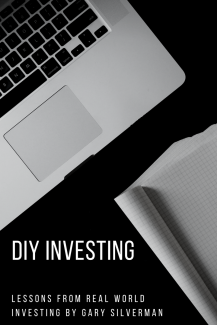
Managing Your Cash Flow Buffer
By Gary Silverman, CFP®
I describe a Cash Flow Buffer as the sometimes missing piece of the investing puzzle. It goes between your riskier investment (a Target-Date fund) and your spending account (otherwise known as your checking account). The more months of spending you store in your Cash Flow Buffer savings account, the longer you can go without having to dip in the Target-Date fund. The majority of time the Target-Date fund will make money. Most of the times when it’s having a down spell and loses money you’ll only need 6-18 months of buffer to ride out the down market. It is during only the occasional protracted down markets that you’d need more.
The larger the buffer the less likely you will run out of money before the market turns and your Target-Date fund returns to pre-event levels. The smaller the buffer, the more money you’ve got growing…good for when times aren’t bad.
What if you are a ways from retirement and have no spending that needs to come from your retirement investments? Well, that means you’ll multiply your buffer years by zero dollars. So whether you’re the type who wants a one-year buffer or a four-year one you won’t have any money in your buffer. But note: If you want a four-year buffer then starting four years from your anticipated retirement you’ll want to start building one up. The less buffer you want, the later you can start building it.
I used a generic “savings account” as the buffer location, but where exactly do you put the buffer money? Think of the cash flows that must come out of it. Some is needed now, some in a year, some in two years, and some after that. What you want is an investment that either won’t go down, or if it does, in a worst-case scenario it is back up again before you need the money. Typically savings accounts, money markets, short-term CDs, and shorter-term investment grade bonds work well in here.
Do not shrink your buffer when the market is doing well. Do not grow your buffer when the market is behaving badly. Both are emotional responses to what is going on around you. Unless you’ve found a way to predict the next downturn, this buffer must be in place and must be able to meet its goal in horrific economic times. Again, thinking that good times will never end is an emotional response, not a logical way of keeping your safety net.
This safety set-aside is really an acknowledgement of your mix of long- and short-term risks. In the long-term your main enemy is inflation—that’s where the Target-Date fund comes into play. But if that is the only investment you have, you’ll be forced to sell pieces of it to live on during market bottoms. This is a short-term worry…and not one you want to ignore. After all, you’ve still got to eat. And short-term worries are best met with cash and other investments whose values don’t tend to go down in bad times.
We’ll have a quiz next week.
Gary Silverman, CFP® is the founder of Personal Money Planning, LLC, a Wichita Falls retirement planning and investment management firm and author of Real World Investing

